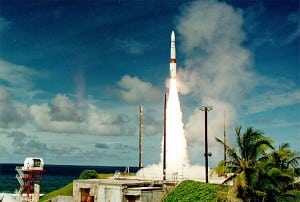
The Missile Defense Agency (MDA) conducted its first test of the Ground-based Midcourse Defense (GMD) system’s Ground-Based Interceptor (GBI) against an intercontinental ballistic missile (ICBM)-like target, the agency said on Tuesday.The MDA launched an ICBM-range target from Kwjalein Atoll in the Marshall Islands that was tested against a GBI launched from Vandenburg Air Force Base, Calif, the home of four interceptors. This test, designated Flight Test Ground-Based Interceptor (FTG)-15, is notable because it is the first test of the GMD against…

 By
By 











